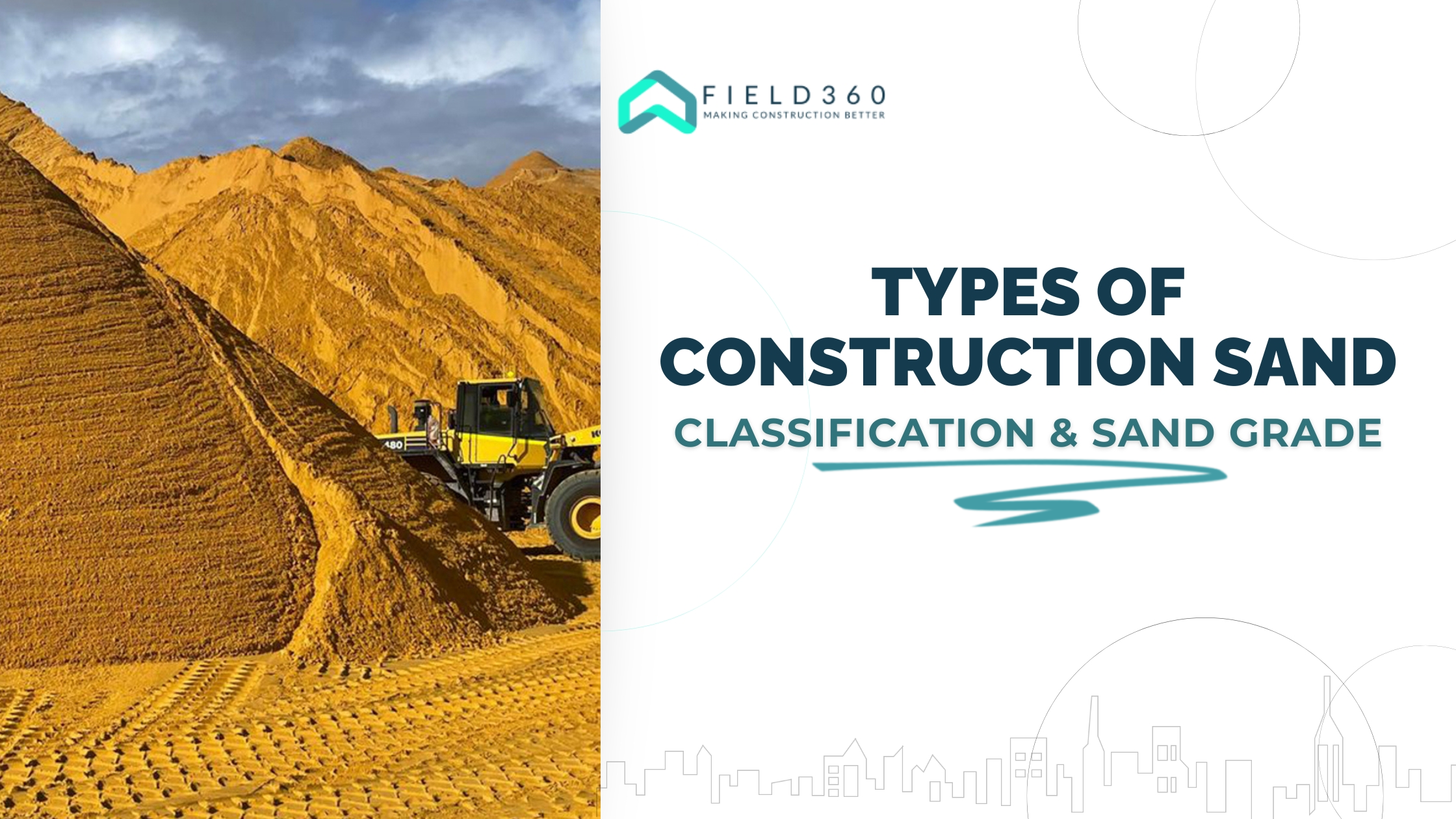Construction Sand is the reason that lies behind the smooth surface of a building, roof, or bridge. Seemingly remarkable building material, construction sand in India is a crucial part of the foundation of any construction. It is used in a variety of applications ranging from concrete mixtures to masonry work.
Different Sand grades are used to fill the basement pits and footings. It is important to understand the different types of sand as they have varying characteristics for specific applications.
This blog will explore the various types of sand used in construction, their properties, and typical applications. By understanding the river sand vs construction sand, builders and construction professionals can choose the most appropriate sand for each application, ensuring optimal strength, durability, and overall quality of their constructions.
Construction Sand in India
Construction Sand is commonly used to give materials like concrete, mortar, asphalt, and cement strength, mass, and stability. However, not all types of sand are created equal. Some contain boulders and impurities that make them less durable and stable for construction.
The creation of suitable bonding between the cement and the construction sand is harmed when impure sand is used. Poor bonding leads to unstable buildings and is not as powerful as it would be if the proper sand was utilized.
When purchasing construction sand in India, make sure the sand is silt-free and finely graded.
Building Sand Classification
Sand can be classified into different types of sand based on various parameters.
Based On Size
Construction sand can be categorized into 3 types based on the diameter of individual sand particles.
- Fine sand (0.075 – 0.425 mm): Plastering, mortar for brickwork.
- Medium sand (0.425 – 2.0 mm): General purpose mortar, concrete slabs.
- Coarse sand (2.0 – 4.75 mm): Drainage applications, concrete foundations.
Based on Source
Based on the source of the sand, they can be divided into 3 types
- River sand for construction: Smooth, rounded grains, good for concrete.
- Pit sand: Angular grains, suitable for asphalt and drainage.
- Manufactured sand: Crushed rock, consistent size, used in high-performance concrete.
Composition of Construction Sand
Based on the dominant mineral present in the sand, there are two types of sand in India
- Silica sand: Most common, composed mainly of quartz, ideal for concrete and glass production.
- Calcareous sand: Contains calcium carbonate, unsuitable for concrete due to potential for cracking.
Gradation or Sand Grades
Sand grade refers to the distribution of particle sizes within the sand. They can categorized as
- Well-graded sand: Contains a mix of different-sized particles, leading to good packing and strength in concrete.
- Poorly graded sand: Dominated by one size of the particle, leading to weaker and less workable concrete.
Types of Construction Sand Based on Origin
In this section, we will study the three main types of sand in detail on parameters such as pros and cons.
| Type | Description | Pros | Cons | Applications |
| River Sand | Smooth, rounded grains due to water erosion. | Good workability for concrete. Readily available in some regions. | Can contain impurities like organic matter and clay. Excessive mining can harm river ecosystems. | Concrete, Mortar, and Plaster |
| Pit Sand | Angular grains from land-based excavations. | Cost-effective. Good drainage properties. | Angular shapes can reduce workability in concrete.May contain impurities like clay and dust. | Asphalt, Drainage applications, and Backfilling |
| Manufactured Sand | Crushed rock is processed to a specific size and gradation. | Consistent size and quality control. An environmentally friendly alternative to river sand. | Higher cost compared to other types. May require additional processing for specific applications. | High-performance concrete, Precast concrete elements, and Paving stones |
Construction Sand Uses
There are various construction sand uses in a building project.
- Used as a major aggregate of concrete, providing bulk and strength.
- As mortar, it is used to bind bricks, stones, and other masonry units together.
- Sands are used as a fine aggregate, contributing to the strength and flexibility of the pavement.
- Used as a base coat for walls and ceilings, providing a smooth surface for painting or other finishes.
- Construction sands have various drainage applications. It is used to create channels or layers that allow water to drain freely.
- It is used in backfilling excavated areas, providing support and preventing voids.
- Used as a component in prefabricated concrete products like pipes, blocks, and panels.
- Construction sand as paving stones is used as individual units to create walkways, driveways, and patios.
Conclusion
Finding which type of sand is best for your construction project can be a challenging task. A strong home needs a strong foundation and who better than Field360 can know it. Field360 is a construction management app and your building buddy that helps you collaborate with different task forces. It helps you overlook your project with a click and even lets you download a Detailed Project Report.
Frequently Asked Questions
S1 sand is a fine-grained sand used in construction materials like concrete, mortar, and plaster.
The price of a truckload of sand can vary depending on factors like location, quality, and demand. However, the price of a 50-pound bag of construction sand in India could be ₹410 to ₹820.
Construction sand is usually not ideal for plants. It’s typically too coarse and lacks essential nutrients for plant growth.












